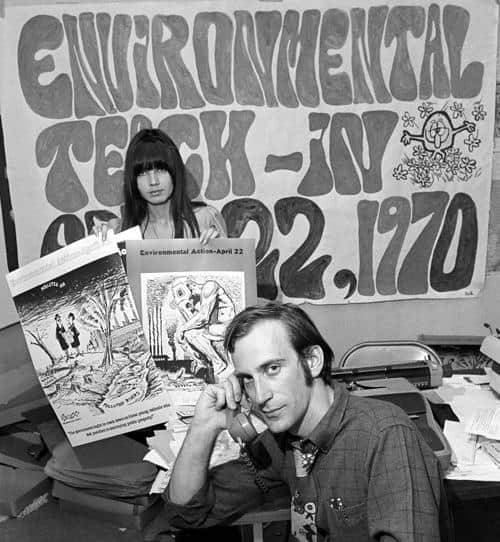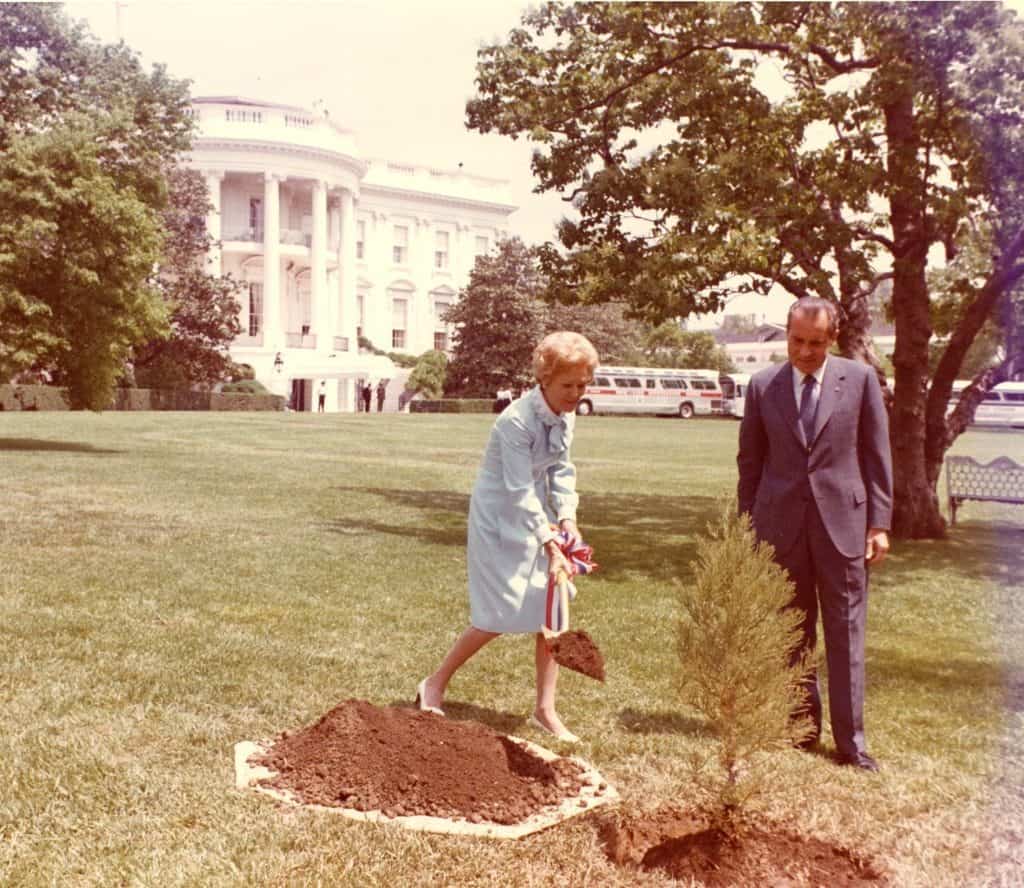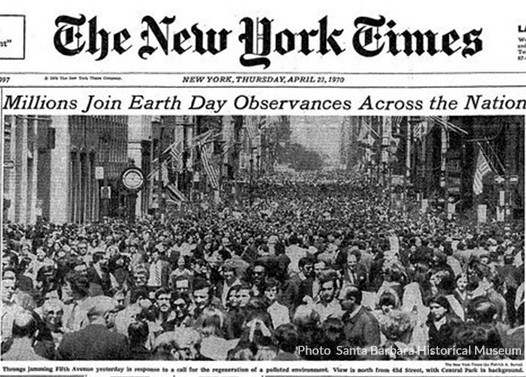The news couldn’t be clearer this Earth Day. Fixing environmental issues can’t wait.
- Africa is facing drought, heavy flooding, and locusts, while Asia has changing rainfall patterns.
- The western United States and northern Mexico are in a megadrought. Scientists from NASA and four universities agree this could be as bad as any drought ever known. Ever.
- New studies show that Covid-19 deaths are highest in areas with the worst pollution.
How Did Earth Day Start?
Democratic Senator Gayord Nelson and Representative Pete McCloskey, a conservative Republican, founded Earth Day. Outwardly opposite, both men loved the outdoors. Each was against the Viet Nam war, but McCloskey had two Purple Hearts from his marine service.
They hired a young environmental activist, Dennis Hayes, to make Earth Day a nationwide event.

Hayes recruited nationwide for 85 other organizers, who built on a growing public consciousness about air and water pollution. They also tapped the enthusiasm and skills of the anti-Vietnam War movement.
On April 20, 1970, around 20 million Americans rallied, demonstrated, and attended Earth Day teach-ins. At the time, this was about 10% of the country’s population.
Earth Day’s First Achievements

President Richard Nixon already saw political gain in the environmental movement. On New Years Day, he had signed the National Environmental Protection Act. By December, the President had established the Environmental Protection Agency (EPA). At the end of his presidency, Nixon was putting the environment on his diplomatic agenda and including it in NATO talks.
The Ford and Carter administrations also pushed forward in passing environmental legislation, and the 1970s saw immense progress at both the federal and state levels. December 1970’s Clean Air Act mandated that the EPA set standards for air quality, while 1972’s Water Pollution Control Act addressed wastewater. Because of these laws and others like the Endangered Species Act, states started environmental oversight agencies.
Earth Day’s Ongoing Legacy
Earth Day quickly became a global event, and it sparked other environmental efforts. Greenpeace, National Resource Defense Council, and other groups began soon after. They joined efforts with older environmental organizations like World Wide Fund for Nature to develop more co-ordinated and effective advocacy.
Since that first Earth Day, innumerable individuals and groups have helped push environmental issues forward. The Kyoto Protocol, The Paris Climate Accords, and the United Nations Framework on Climate Change are all the result. As the list at the top of this post shows, though, there is far more to do.












